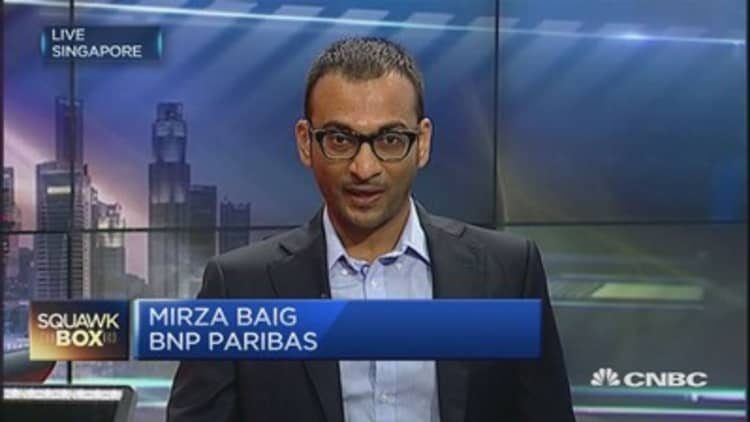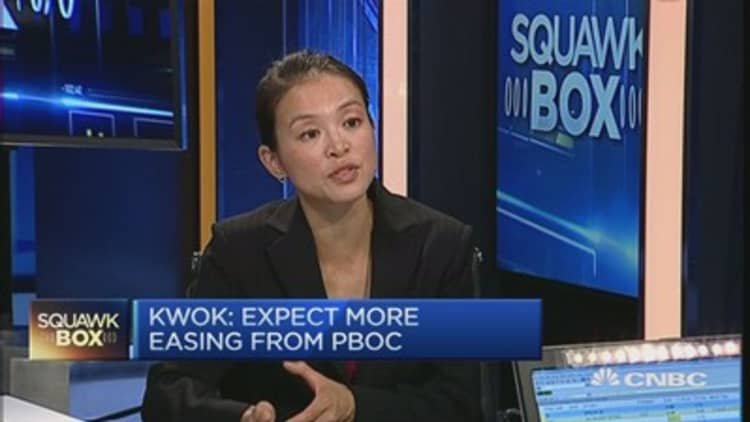


The last time emerging markets had it nearly this bad, Ronald Reagan was the U.S. President, KKR purchased RJR Nabisco, and a future popstar named Rihanna was born.
Net capital flows for global emerging markets will be negative in 2015, the first time that has happened since 1988, the Institute of International Finance (IIF) said in its latest report. Net outflows for the year are projected at $541 billion, driven by a sustained slowdown in EM growth and uncertainty about China, it added.
In other words, investors will pull out more money out of emerging markets than they will pump in.
The data come on the heels of a separate IIF report this week that showed portfolio capital outflows in EMs amounted to $40 billion during the third quarter, the worst performance since 2008.
Indeed, relief from the Federal Reserve's decision to delay its first interest rate hike in a decade has proved to be short-lived for EMs amid fresh evidence of a slowing Chinese economy, precipitous currency declines, a sustained slide in commodity prices, and political uncertainty in countries such as Brazil and Turkey.
Covering a group of 30 economies, the IIF report estimates net non-resident inflows at $548 billion for 2015 from $1,074 billion last year—levels not seen since the global financial crisis.
Read More Strategist: Don't touch emerging markets just yet
"As a share of gross domestic product (GDP), non-resident inflows have fallen to about 2 percent from a record high of almost 8 percent in 2007."
The situation is exacerbated by the fact that investors residing in emerging market countries are buying more foreign assets. Known as resident outward investment flows, 2015's reading is expected to hit a historical high of $1,089 billion, which is likely to further pressurize reserves, exchange rates and asset prices of EMs, the IIF said.
"On a net basis, lower inflows and rising outflows imply that private capital is leaving EMs for the first time since the early 1980s."
So, which region is the weakest? No surprises here.
"It is noteworthy that a large part of the decline in overall flows this year is attributable to flows out of China, which intensified after the People's Bank of China announced a mini-devaluation of the renminbi and a shift to a more market-oriented exchange rate fixing regime in August."
No recovery anytime soon
The high level of non-financial corporate debt as a share of GDP is a major, underlying reason for sustained pressure on EM asset prices, pointed out Hung Tran, executive managing director at the IIF.
"As monetary policy continues to diverge and the Fed begins liftoff, countries with large amounts of corporate debt, especially in USD, will face difficulties, with rising prospects for corporate distress, weakening capital investment and growth."
Read MoreIndia or Indonesia: Which economy is more competitive?
The IMF also signaled out corporate debt as an area of caution in its Global Financial Stability report this week. Emerging market firms now boast a record $18 trillion of debt, with the largest increases in leverage in highly vulnerable sectors, such as construction, mining and oil, the IMF said.
It’s still not 2008
The fact that aggregate emerging market equity indices have lost almost a quarter of their value since reaching highs in late-April have led investors to ask whether this is the beginning of another EM crisis, Vontobel Asset Management said in a report this week.
The IIF staunchly disagrees, however. While data may be reminiscent of the 2008 crisis, the factors are fundamentally different, with the IIF likening this year's episode to "a lengthening drought" rather than a crisis event.
"Unlike the 2008 crisis, the reasons are largely internal rather than external - related to rising concerns about economic prospects and policies in China, coupled with broader uncertainties about EM growth prospects," noted Charles Collyns, managing director and chief economist at the IIF.
In contrast, the 2008 collapse in capital flows was due to a deep recession in mature economies that spilled over rapidly to emerging markets.

